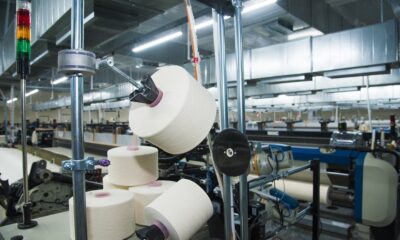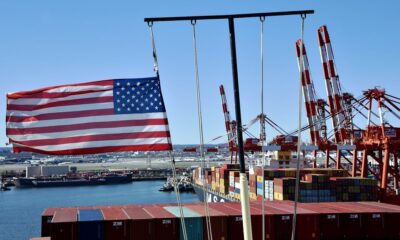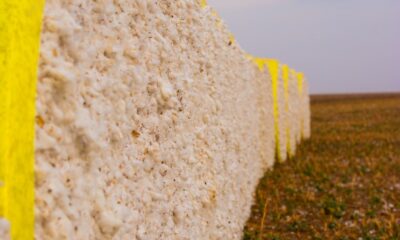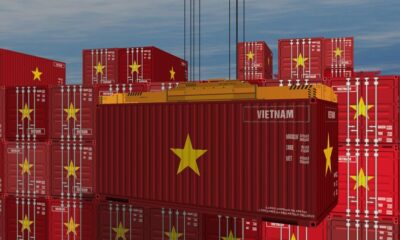Fashion
Tariff pressure casts shadow on Gujarat’s textile landscape
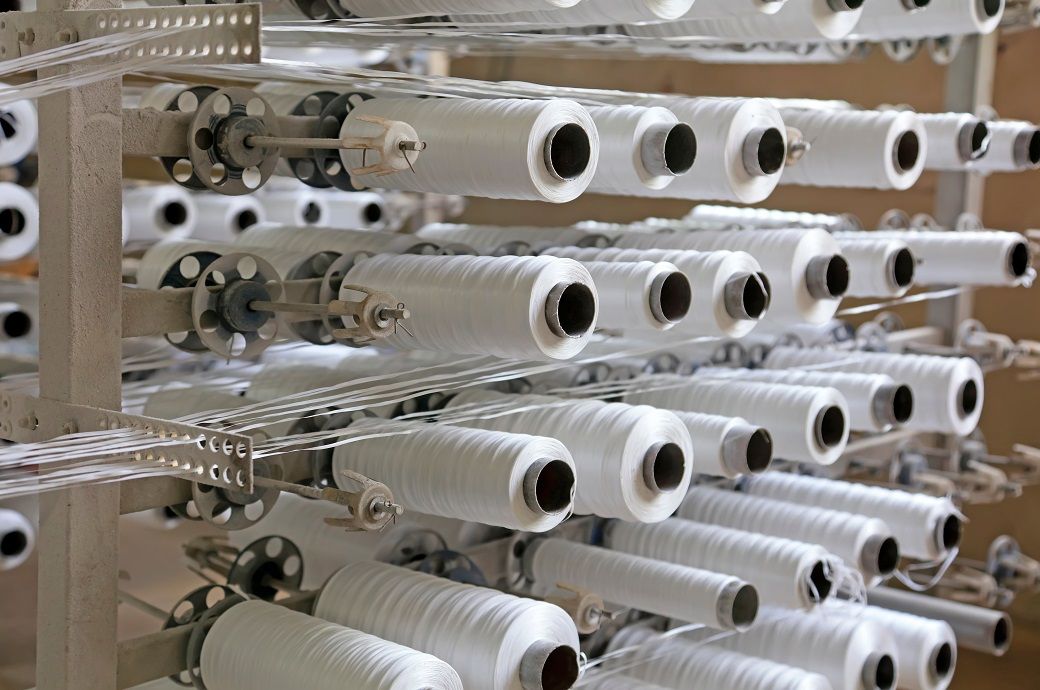
Industry insiders are ringing alarm bells over the unfolding situation “There’s no way to absorb a 50 per cent tariff hike; we don’t have the margins,” claimed one industry player in conversation with Fibre2Fashion.
Many within the industry are worried that the abrupt increase in US tariffs could derail their businesses completely.
The duties on Indian textiles and apparel exports to US, across categories, will reach alarming levels.
Carpets will reportedly face a 52.9 per cent tariff, knitted garments 63.9 per cent, woven garments 60.3 per cent, and textiles & made ups 59 per cent.
In FY25, Gujarat’s export landscape was led by petroleum products at $43.9 billion, followed by engineering goods worth $16.6 billion, gems and jewellery at $8.3 billion, and textiles at $5.6 billion, as per some estimates. While textiles may not be the state’s top export, it is especially important due to the large-scale employment and deeply integrated supply chains that it supports. Now, with tariffs set to double—from 25 per cent to 50 per cent—industry players are bracing for the worst even as some expressed apprehensions that the abrupt increase in tariffs could derail their businesses altogether.
Reflecting the wider sentiment, an industry player explained that US shipments across the board have been put on hold while many well-established direct exporters are also struggling to keep operations running smoothly as shockwaves from the tariff hike spread through every link in the textile value chain. Mills, job work units, and raw material suppliers are already beginning to feel the heat, and if large exporters start losing orders, the consequences could cascade down to the smallest players in the ecosystem, creating a widespread disruption.
Order cancellations for US shipments are already piling up, media reports claim, and industry players confirm the slowdown is real—with no clarity on what lies ahead.
What compounds the issue further is the fact that the 50 per cent tariff is not a standalone levy—it is in addition to the standard import duty already in place in the US. Some estimates indicate that total duties on Indian textiles and apparel exports to the US will now reach alarming levels across various categories: carpets will face a 52.9 per cent tariff, knitted garments 63.9 per cent, woven garments 60.3 per cent, and textiles and made ups 59 per cent.
These figures illustrate just how uncompetitive Indian products will become under the new regime, effectively pricing them out of the US market.
In response to the emerging crisis, the Ministry of Commerce and Industry has reportedly begun reaching out to export-heavy states like Gujarat, Maharashtra, and Tamil Nadu, urging them to extend support to labour-intensive industries such as textiles. Simultaneously, the Central Government is reportedly working on a three-pronged approach to help exporters navigate the fallout from the US tariffs. One key component of this strategy involves the launch of a sector-specific support scheme under the proposed ₹2,250 crore Export Promotion Mission. The objective is to offer immediate relief to impacted sectors, while also identifying alternative international markets for redirected exports and encouraging domestic consumption of surplus products.
The Union Ministry of Textiles, for its part, has reopened the Production-Linked Incentive (PLI) scheme for the textile sector, inviting fresh applications from eligible entities. This decision came in response to growing appeals from the industry, which has been seeking urgent support to weather what many view as an existential threat.
The Government has also recently removed the 11 per cent import duty on cotton till September 30 this year, in a move to help the domestic textiles industry to deal with the US tariff issue.The decision, notified by the Central Board of Indirect Taxes and Customs (CBIC), is expected to lower input costs across the textile value chain encompassing yarn, fabric, garments, and made ups and provide much needed relief to manufacturers.
However, there is still scepticism within the industry if such interventions could help insulate it from the implications of high tariffs and long-term damage.
Fibre2Fashion News Desk (DR)
Fashion
Bangladesh’s RMG exports up 4.7% in Q1 FY26, but Sept shipments dip
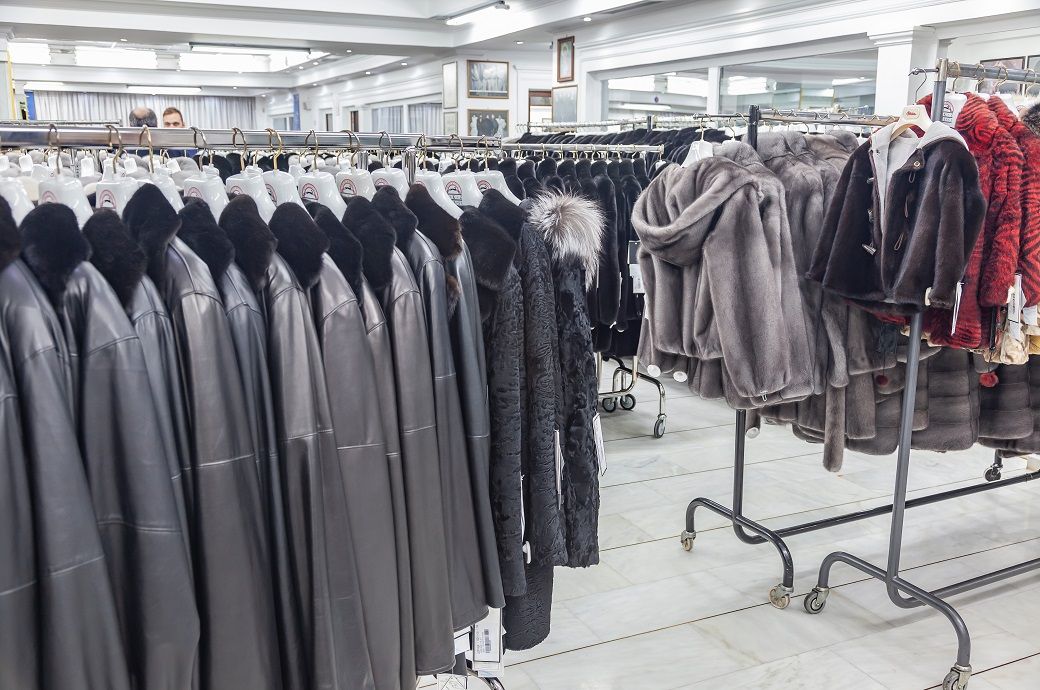
Woven garment exports slightly outpaced knitted garment exports in terms of growth. Knitwear exports (Chapter **) rose by *.** per cent to $*.*** billion, compared to $*.*** billion in the same period of fiscal ****–**. Woven apparel exports (Chapter **) increased by *.** per cent to $*.*** billion, up from $*.*** billion in July–September ****, EPB data showed.
Home textile exports (Chapter **, excluding ******) also grew, rising by *.** per cent to $***.** million, compared to $***.** million in the same period of the previous fiscal. Collectively, exports of woven and knitted apparel, clothing accessories, and home textiles accounted for **.** per cent of Bangladesh’s total exports, which stood at $**.*** billion during the period. Higher demand for diversified and value-added textile products supported this growth.
Fashion
Dutch manufacturing flat in August, up 1.7% from July: CBS
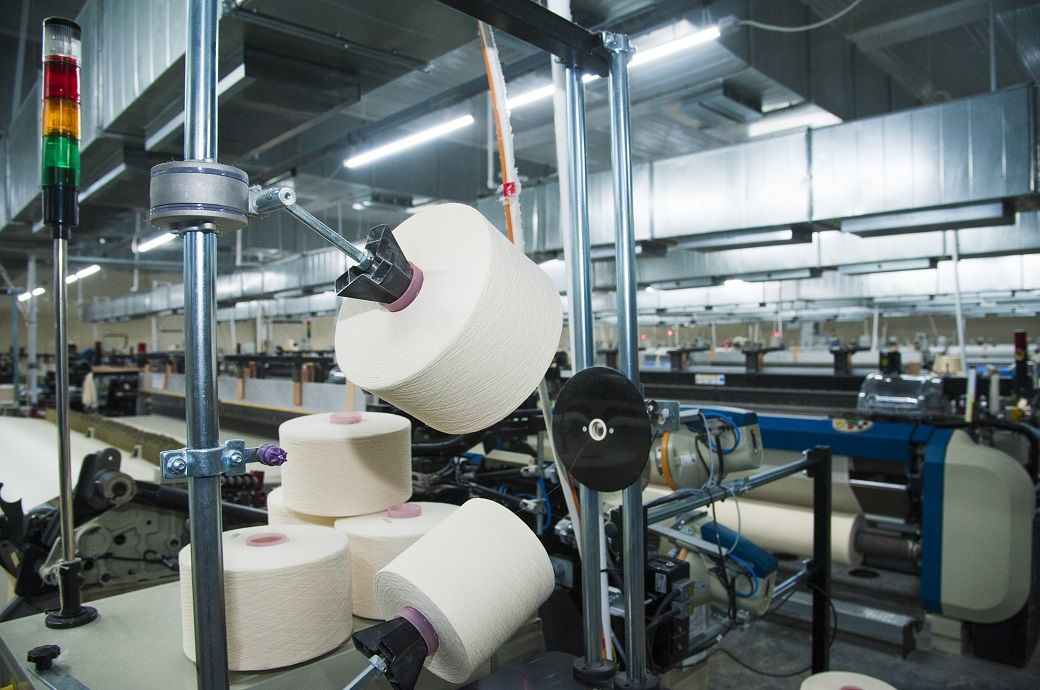
Slightly more than half of the various industrial sectors produced less than they did one year previously. Of the eight largest industrial sectors, output rose the most sharply in the repair and installation of machinery, while it fell the most sharply in the transport equipment industry.
A more accurate picture of changes in short-term output is obtained when the figures are adjusted for seasonal effects and the working-day pattern. After adjustment, manufacturing output rose by 1.7 per cent in August relative to July, CBS said in a press release.
In August 2025, Dutch manufacturing output remained unchanged year-on-year, although output declined in over half of the industrial sectors.
After seasonal adjustment, output rose by 1.7 per cent compared to July.
The strongest growth was seen in the repair and installation of machinery, while transport equipment recorded the sharpest decline.
After adjusting for seasonal and working-day effects, manufacturing output often fluctuates significantly. In the spring of 2020, output declined rapidly, reaching a low point in May 2020. This was followed by an upward trend until May 2022. The trend has reversed since then.
Producer confidence was less negative in September than it was in August. Manufacturers were more positive regarding output for the next three months, in particular.
Germany is an important market for the Dutch manufacturing sector. In September, German manufacturers were more negative than they were in August, as reported by Eurostat. In August, the calendar-adjusted output of the German manufacturing sector was down by 5.1 per cent, year on year. Relative to July, output fell by 5.5 per cent, as reported by Destatis.
Fibre2Fashion News Desk (RR)
Fashion
ADB commits $82.5 mn to drive Cambodia’s energy transition
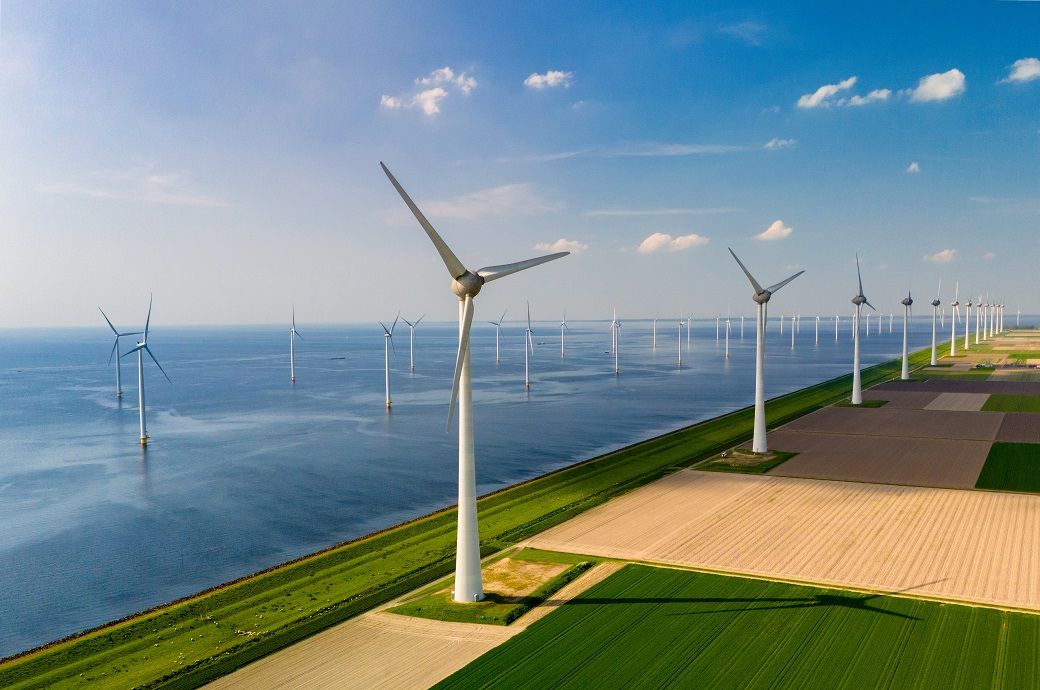
The first subprogramme, approved in 2022, introduced pivotal policy measures that guided the energy sector toward a more efficient and renewable development pathway. Building on this foundation, subprogramme 2 advances regulatory reforms to strengthen the energy efficiency framework and enhance policy clarity to attract private sector investment. A key milestone under the subprogramme is the introduction of the country’s first set of regulations establishing Minimum Energy Performance Standards for electrical appliances, starting with air conditioners, which account for the largest share of energy consumption in the residential sector, ADB said on its website.
Subprogramme 2 will also establish an Energy Efficiency Revolving Fund aimed at facilitating access to finance for local small and medium-sized enterprises (SMEs) to invest in energy-efficient technologies. The revolving fund will be set up through a financial intermediation structure to enable local banks to extend loans to SMEs for energy efficiency investments. By mobilizing domestic financial institutions and supporting SMEs, the revolving fund is expected to accelerate the nationwide scale-up of energy efficiency investments.
Asian Development Bank (ADB) has approved $82.5 million for Phase 2 of Cambodia’s Energy Transition Sector Development Programme to support clean energy through policy reforms and investments.
The programme introduces energy efficiency standards, establishes a revolving fund for SME financing, and also aims to attract private investment.
“ADB is honoured to support Cambodia in its ambitious and transformative journey in the energy sector. Through a comprehensive reform package, combining policy support with strategic investments, the Energy Transition Sector Development Programme will support turning the government’s ambitious vision into reality,” said ADB acting country director for Cambodia Anthony Gill. “This includes the goal of achieving 70 per cent renewable energy in the power mix by 2030, along with a strong commitment to advancing energy efficiency, which is essential to ensure that Cambodia’s growth remains both sustainable and affordable.”
Subprogramme 2 will be followed by a third phase in 2027, which will further deepen reforms by expanding the energy efficiency regulatory framework and introducing technical standards for renewable energy, buildings, and industry to further attract private sector investment.
Fibre2Fashion News Desk (RR)
-

 Tech6 days ago
Tech6 days agoI’ve Tested Countless Mesh Systems. Here Are the Routers I Recommend
-

 Tech1 week ago
Tech1 week agoAmazon Prime Big Deal Days Is Next Week, but We Already Found 40 Early Deals
-
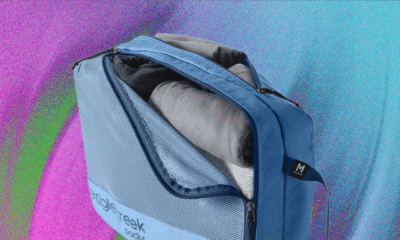
 Tech1 week ago
Tech1 week agoAll Hail the Surprisingly Versatile Packing Cube! These Are Our Favorites
-

 Tech6 days ago
Tech6 days agoJony Ive Says He Wants His OpenAI Devices to ‘Make Us Happy’
-

 Tech1 week ago
Tech1 week agoAI in an ‘industrial bubble’ but will benefit society: Bezos
-
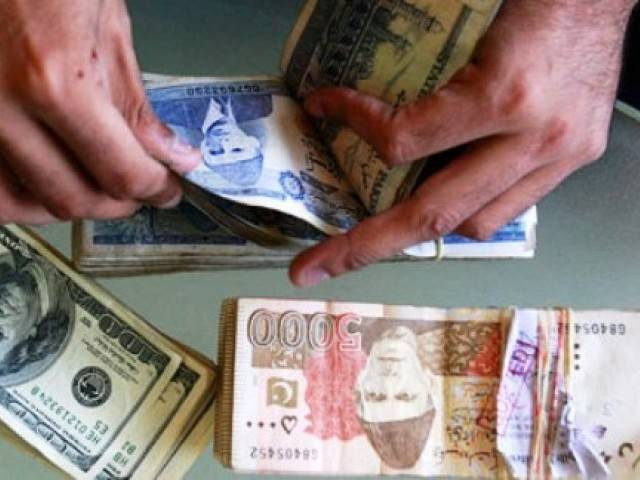
 Business7 days ago
Business7 days agoInvestors are packing up; Pakistan must ask why | The Express Tribune
-

 Tech1 week ago
Tech1 week agoAmazon is overhauling its devices to take on Apple in the AI era
-
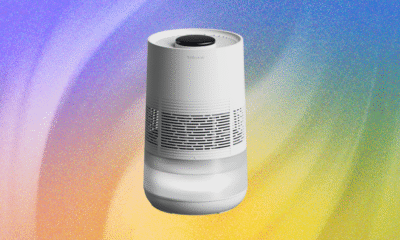
 Tech1 week ago
Tech1 week agoCombat Dry Indoor Winter Air With a New Humidifier


